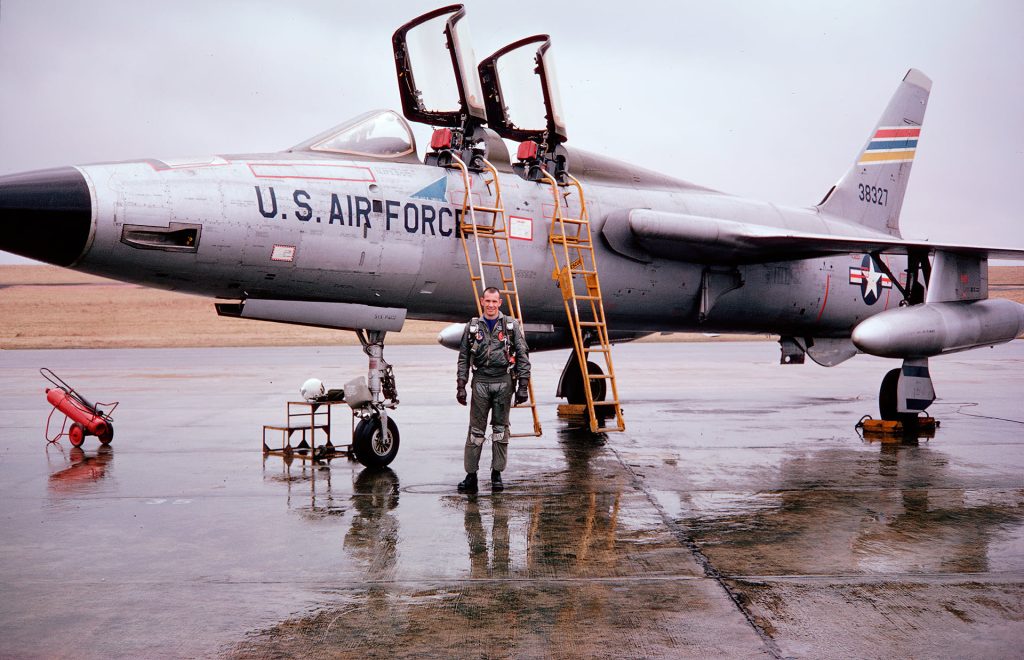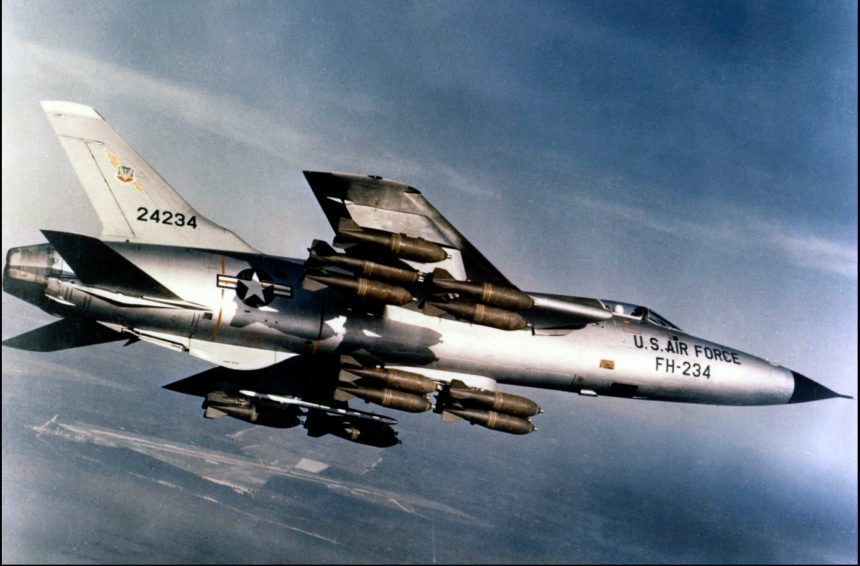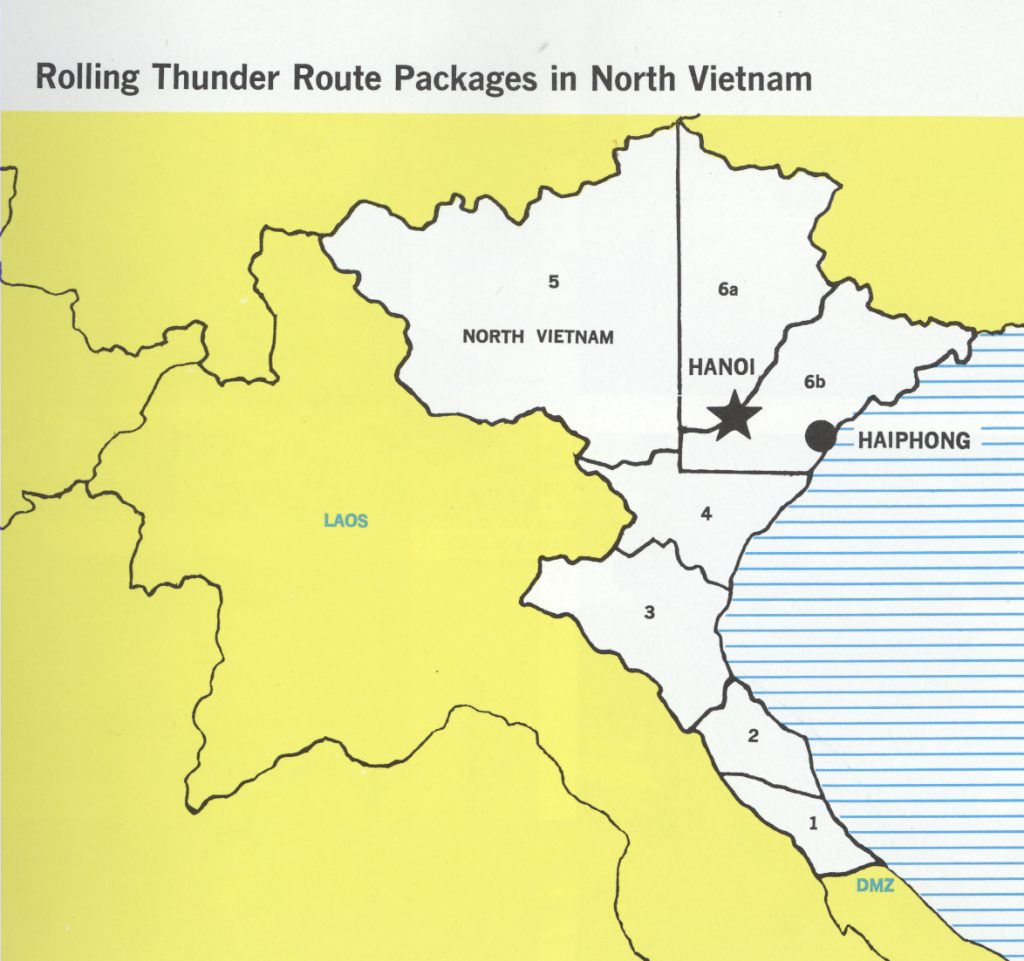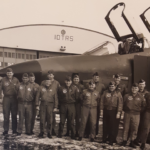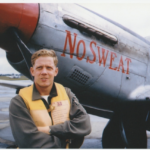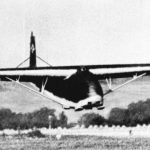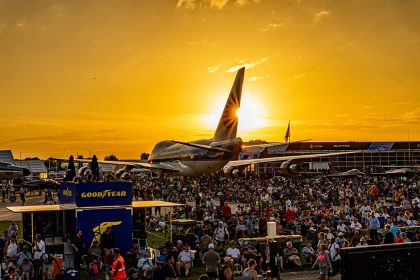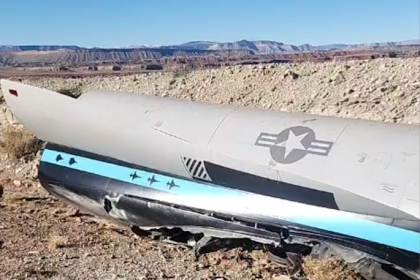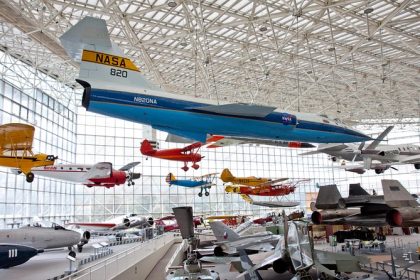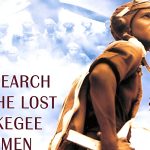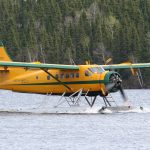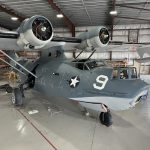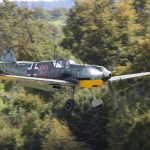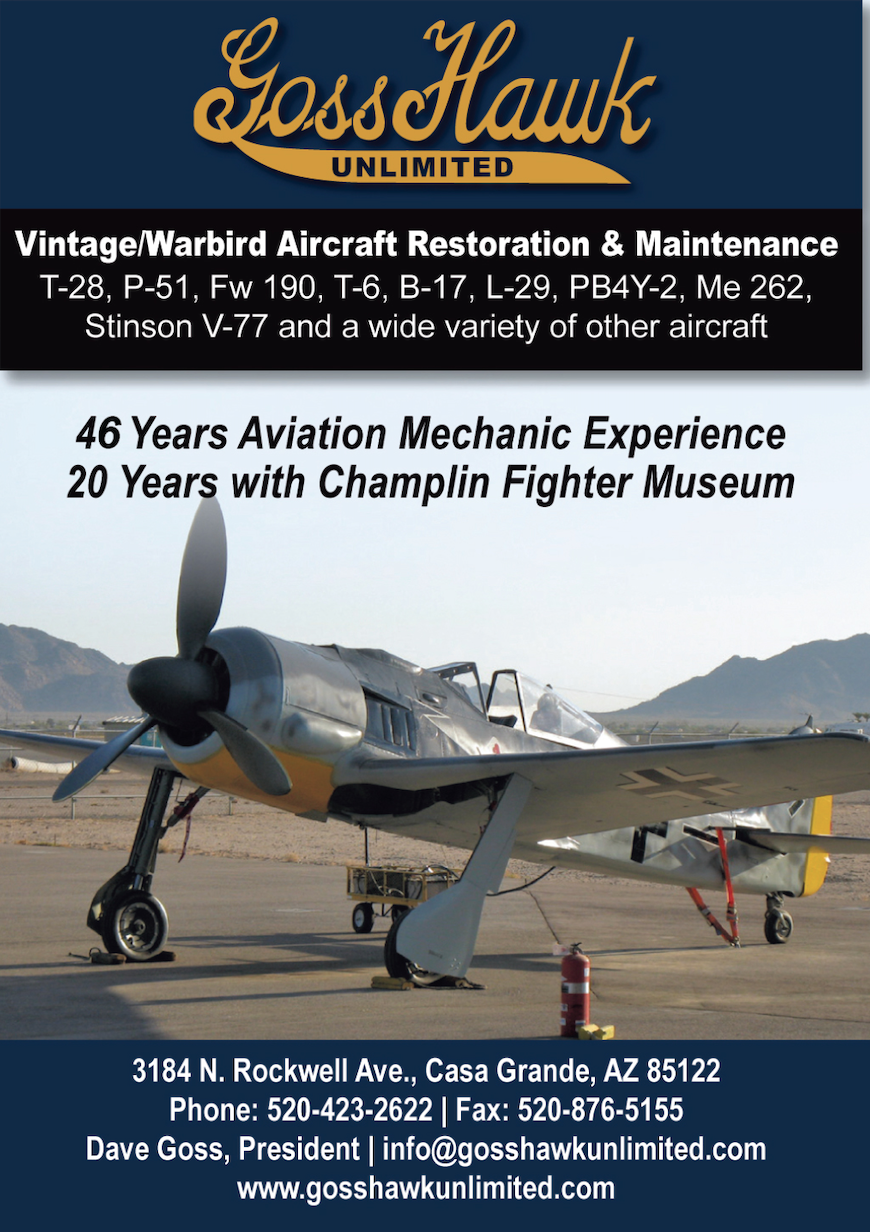Last week, Vintage Aviation News met Andrew Hanna, son of U.S. Air Force fighter pilot Keith Hanna, who, among other things, flew F-86s in Korea shortly after the war and saw action in the skies of Laos and Vietnam. In the latter, Col. Hanna served in the 333rd Tactical Fighter Squadron (TFS) Lancers, flying over 100 missions in F-105 Thunderchiefs out of Takhli Royal Thai Air Force Base. Over the next several weeks, we will highlight the varied career of Col. Hanna, but as a precursor to that series, we wanted to bring you a story written by Ron Patchett, Col., USAF (Ret), about a mission he and Hanna flew on January 24, 1968. These are his words from July 15, 2021.
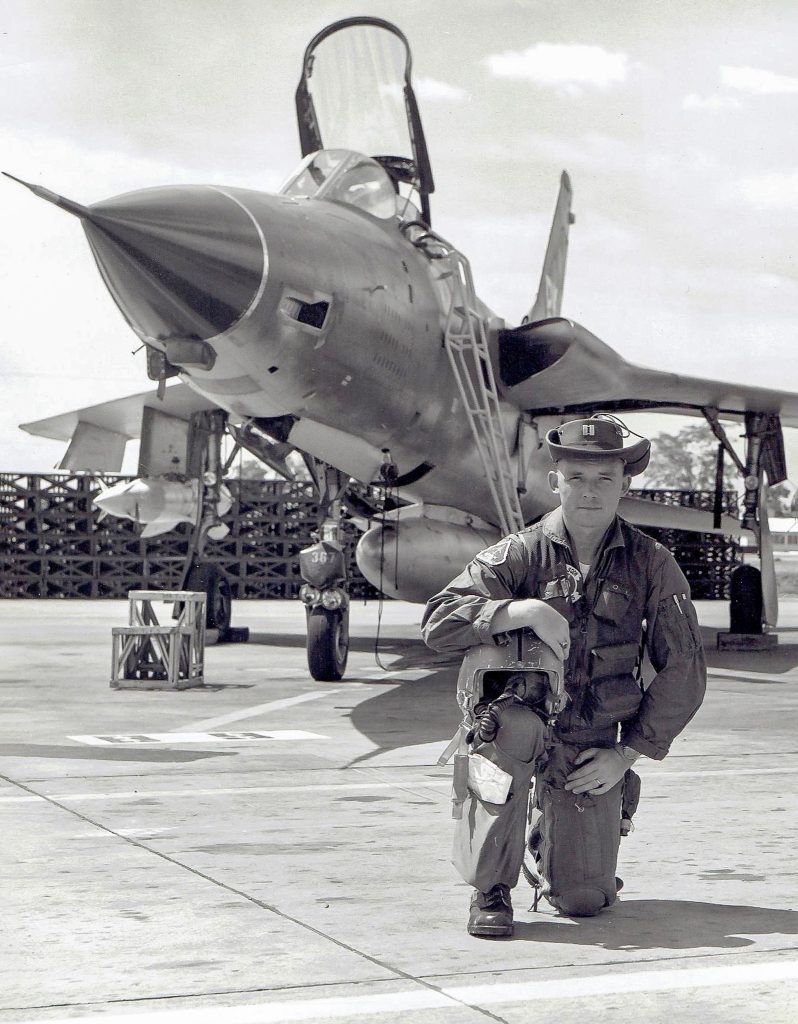
In addition to the missions we flew “Downtown” (Route Pack VIa/Hanoi), one of the more memorable missions I flew with Keith was a 2-ship GAM shoot into the Steel Tiger (south-central Laos) area. We checked in with Hillsborough (C-130 Airborne Command and Control Aircraft) and were directed to link up with a Raven (O-1 Bird Dog forward air controller) Forward Air Controller (FAC). When we rendezvoused, he told us he had been watching a particular karst cave that showed nightly activity. The fighters couldn’t get their bombs in at an angle that would do anything but tear up the vegetation adjacent to the karst. The trail workers would camouflage the area every night, and in the morning, it was unrecognizable. He was hoping the flatter trajectory of the GAMs could get different results.
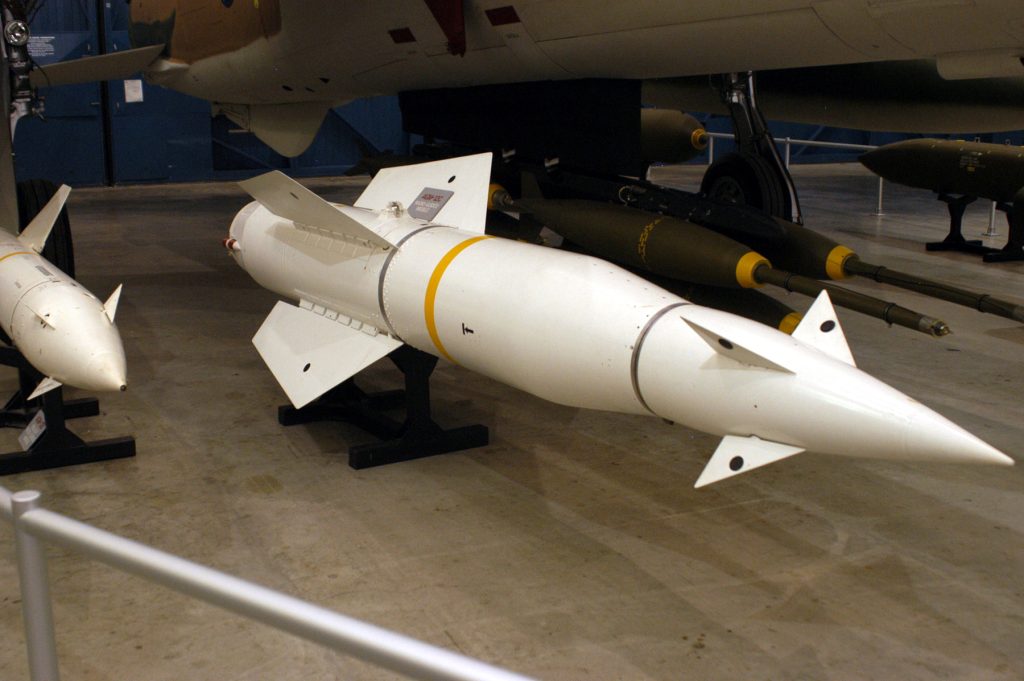
[VAN note- On this mission, Patchett and Hanna’s Thuds were loaded with a pair of Martin Marietta AGM-12C Bullpup B air-to-ground missiles. Development of the missile dates back to 1953, and it first entered service with the US Navy in 1959 with the Bullpup B, equipped with a 1,000-pound warhead, entering service in 1964. The weapon was guided by the launch aircraft through the manual command to line of sight (MCLOS) method, with the pilot tracking the flight of the missile via two bright flares on the weapon’s tail and making corrections using a small joystick in the cockpit.]
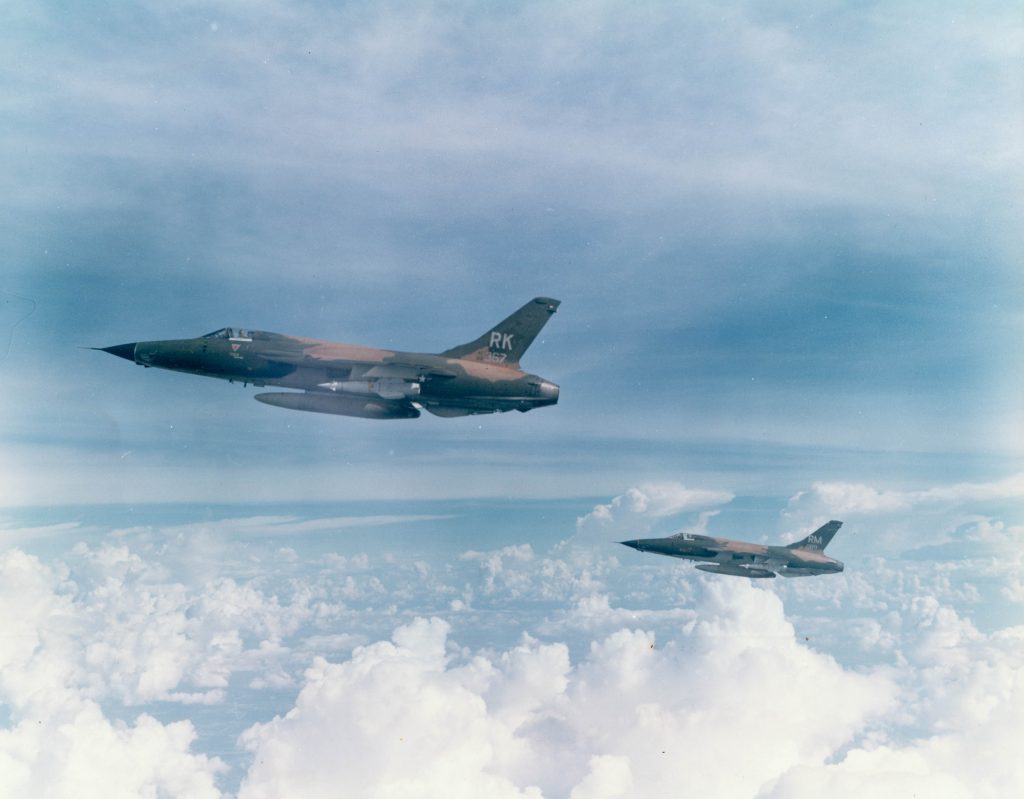
The FAC rolled in and put a Willy Pete (WP- white phosphorous marking rocket) in some bushes at the base of the karst and told me to hit the mark. The AGM-12C was fairly easy to guide once you became experienced with it, as Keith and I were. The missile was easy to employ when used against a building or a bridge, but trying to hit a camouflaged cave opening was difficult, especially from a fast-moving F-105. I rolled in from 8,000 ft, and after stabilizing my dive, which was released at 6,000 ft, I launched the missile and steered it onto the spot marked by the Raven’s WP. The result was nothing but the explosion from the missile’s warhead.
The FAC told Keith to move the aimpoint 10 meters to the right. Again nothing. The FAC told us to stand by and fired another WP about 30 meters further around the karst. On my second pass, I got a medium-sized secondary explosion from some ammo that was stored beside the karst. During my pull off, the FAC told Keith to move his aimpoint 10 meters to the right. As I bent it around, I heard Keith call a dud, followed shortly by a “Whoa-Boy!!” from the FAC. When I got around far enough, I could see smoke billowing from the top of the karst and two other points about halfway up.
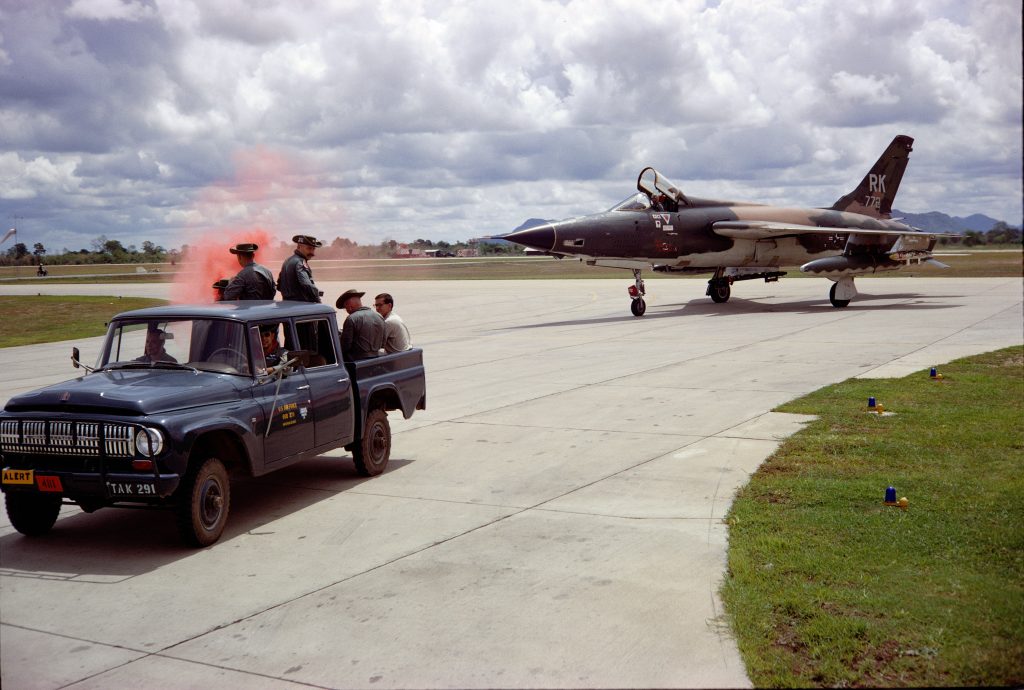
When we got home Keith told me his missile had gone into the bushes and since he didn’t see an explosion figured the missile’s fuze was a dud. What actually happened, is that Keith’s missiles had gone directly into the cave before exploding and set off the stored ammo. He said the whole top of the karst literally erupted in an explosion with flames shooting out from multiple locations.
After finishing with the Raven, I checked back in with Hillsborough, gave them the primary mission accomplished report, and requested entry into RP-I (the area from the DMZ north for about 75 miles to the RP-II line), for deconfliction between Air Force and Navy Ops, North Vietnam was divided into seven different areas called Route Packages. Responsibility for Route Pacs I, V, and VIa (inland areas) “belonged” to the Air Force, while Pacs II, III, IV, and VIb (areas adjacent to the coast, including the port city of Haiphong) belonged to the Navy. We always had to get permission to enter an area to ensure there weren’t too many aircraft in too close a proximity. It also shrunk the areas for rescue forces to start a search for a downed pilot. In RP-I, from the DMZ to about 10 miles north, looked like the craters of the moon from previous strikes, but we would sometimes see something to shoot at with our 20mm Gatling gun north of there or at least make the bad guys keep their heads down during the day. The M61A1 Gatling gun was effective against thin-skinned vehicles like aircraft, trucks, or boats but less against hardened targets. Once cleared into RP-I, we headed about 50 miles north of the DMZ near Dong Hoi. We could sometimes catch a “Bonus Runner,” a truck driver with a time-sensitive cargo they needed badly enough to risk getting caught out in the open during the daytime. We flew across the RP from west to east, which is only about 40 miles wide at that point, without seeing anything. Just as we were about to coast out into the Gulf of Tonkin, I spotted a lighter moored in one of the many inlets. It had to be at least 150 ft long with a good-sized super-structure. We passed about a mile out to sea before letting down, turned inbound, and accelerated to about 500 knots in line abreast. The whole ship lit up like a Christmas tree just before getting into gun range, indicating many firing anti-aircraft guns. We each got off a quick shot and hauled a**!!! It was an unwritten law in the squadrons that was drilled into us time and again to never duel with anti-aircraft guns – they always had bigger guns than we did and had a much more stable aiming platform, making it a losing battle for us. Once we were above 37mm gun range, we orbited while Keith, who had a detailed map of the area, gave the coordinates to Hillsborough. They scrambled F-4s loaded with bombs out of Da Nang, but we didn’t have enough fuel to stick around.
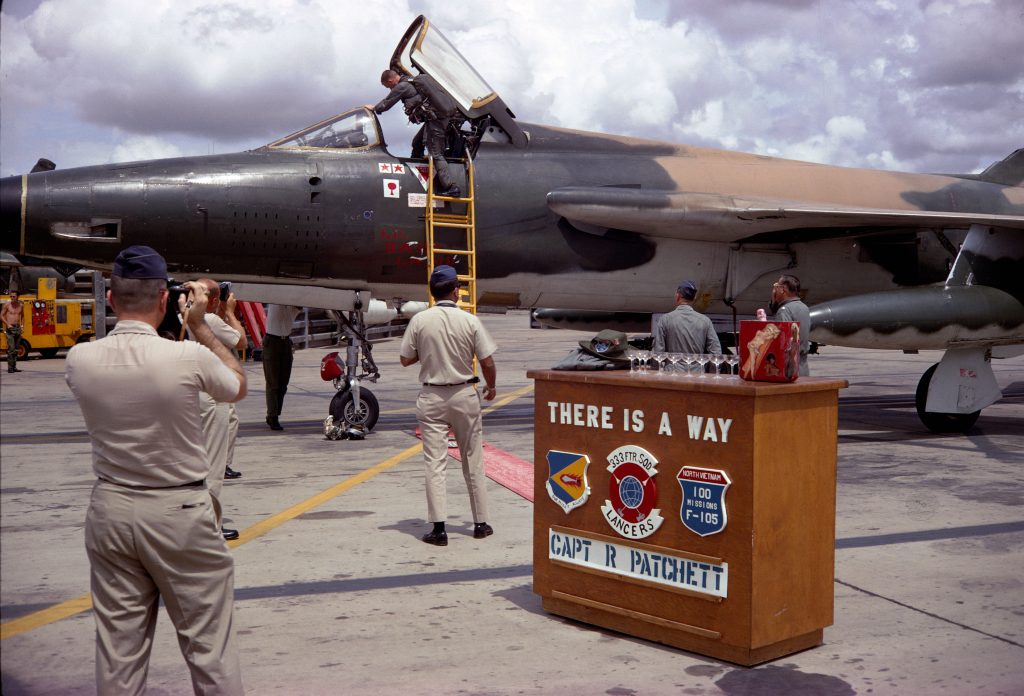
After we hit the tanker and returned to Takhli, we checked with Hillsborough, and they said nothing was found when the F-4s arrived on the scene. Was it a trap? Quite possibly, so yes. The North Vietnamese were known to put up elaborate ruses to shoot down one US aircraft. They would then allow the downed pilot to remain free and use him as bait in order to shoot down slow-moving rescue aircraft when they came in to pick up the downed pilot and, if successful, repeat the process with each succeeding rescue attempt. They once had seven aircraft down (mostly helicopters) in Northern Laos, with some 20 crew members on the ground during one continuous rescue attempt. This was The Rescue of Streetcar 304. One of them was an Air Force Academy classmate (flying an A-1H Sandy) I had seen just a week before he went down. He ended up spending 5 yrs in the Hanoi Hilton. As the saying goes, “If something seems too good to be true – it probably is.” Neither Keith nor I had ever before seen something like that lighter in the southern RPs, and the fact that it had so many guns and was so prepared to get underway in so little time seemed strange.
It is sobering to note that the three Thunderchiefs pictured here were among the 334 examples lost to enemy action during the war. One aircraft, however, scored two aerial victories in 1967.
F-105D USAF #59-1772
March 26, 1967- Col. Robert R Scott, commander of the 355th TFW, scored an aerial victory in this aircraft during a strike near Hoa Lac airfield. Shooting down a MiG-17 with the 20mm cannon. His account reads, “During recovery from the bomb run, while heading approximately 250 degrees, altitude approximately 4,000 feet, I observed a MiG taking off from Hoa Lac airfield. I began a left turn to approximately 150 degrees to follow the MiG for possible engagement. At this time, I observed three more MiG-17s orbiting the airfield at approximately 3,000 feet in a single ship trail with 3,000 to 5,000 feet spacing. The MiGs were silver with red stars. I then concentrated my attention on the nearest MiG-17 and pressed the attack. As I closed on the MiG, a turn began to the right. I followed the MiG, turned inside, and began firing. I observed hits on the left wing. The MiG began a hard left-descending turn. I began to overshoot and pulled off high and to the right. The last time I saw the MiG it was extremely low, approximately 500 feet, and rolling nose down.”
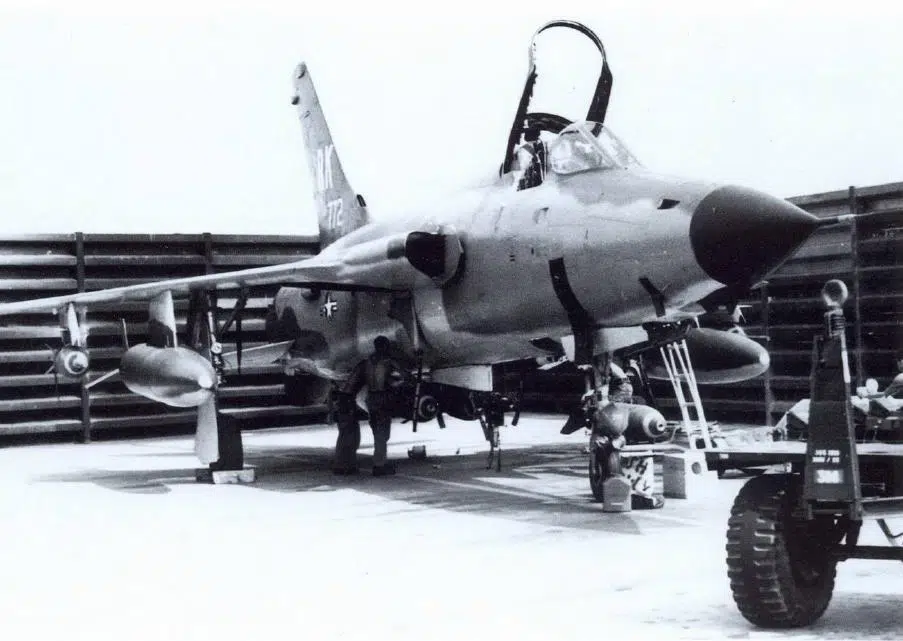
April 30, 1967*- On this day, Captain Thomas C. Lesan (Rattler 01) was on a strike against the Northeast Railroad when he spotted a MiG-17. He reported then, “I tracked and opened fire on the number two MiG at approximately 1,000 feet. I fired 100 rounds of 20mm, noting hits impacting down the left side of the forward fuselage and the left wing. The MiG was last seen with his left wing on fire.” *Some sources indicate the date of this victory was the day before while Lesan was flying #60-0498.
January 20, 1970- Major DW Livingston was at the controls over Laos when the aircraft was hit by AAA, forcing him to eject. He was rescued.
F-105D USAF #62-4367 July 14, 1968- Maj. Keith Hanna was forced to eject over RP I and was rescued. The events of this day will be recounted in a future article.
F-105D USAF #61-0089 December 21, 1968- Col. Richard K. Allee was piloting this Thud on an escort mission over Laos. After completing the escort, an FAC requested his formation perform a strike against a target a few miles southwest of the notorious Mu Gia Pass. Col. Allee’s aircraft was hit by ground fire, caught fire, and went down in a wooded area. None of the other members of Allee’s flight saw him eject, no parachute was seen, and no emergency beepers were heard, but Col. Allee was still listed as Missing in Action. When the war ended, the 600+ Americans that were lost over Laos, and despite Pathet Lao’s claim that “tens of tens” of Americans were being held in Laos, none ever returned. In December 1996, a joint U.S. and Laotian investigative team recovered human remains at a site associated with Col Allee’s loss. In 1998, forensic analysis identified the recovered remains as those of Col Allee. He is memorialized on the Courts of the Missing at the National Memorial Cemetery of the Pacific.
